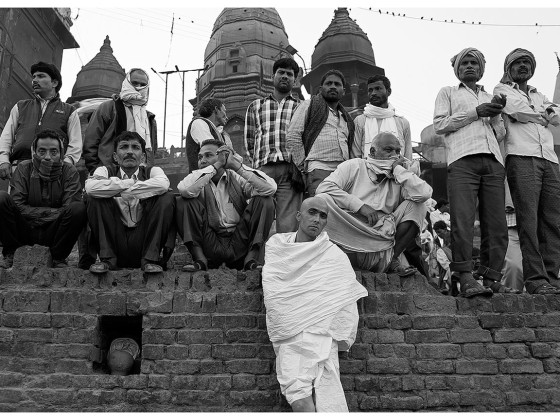Varanasi is the sacred city according to the Hindus, the place to be cremated to stop the cycle of rebirths, freeing the soul to heaven. This is Manikarnika Ghat, one of many ghats (derived from the english word “gate”) on the sacred Ganges River. Immersing oneself in the river is believed to purify the soul and for sins to be forgiven. Ceremonies take place 24/7 and have been for centuries.
All photos by the author.
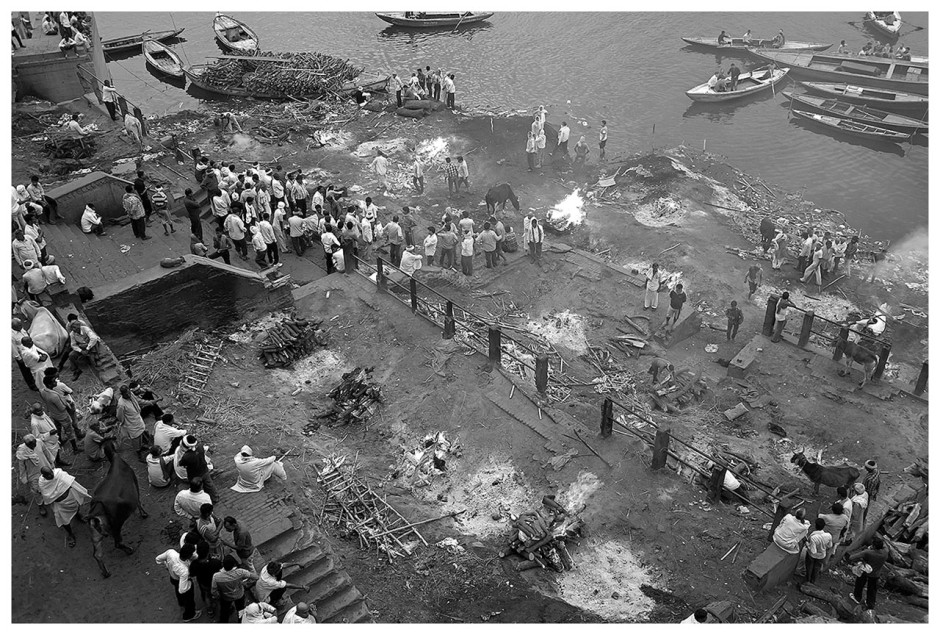
Manikarnika Ghat
Manikarnika Ghat is considered by Hindus as the most sacred place in the world to die and be cremated.
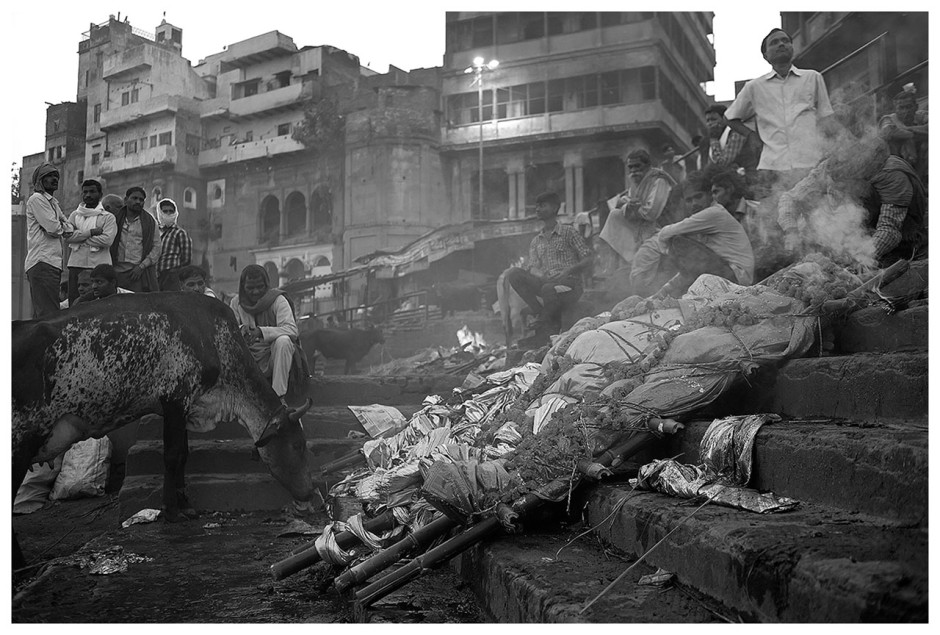
Awaiting cremation
From the time of death no more than 24 hours pass before the bodies of the dead are laid on the Ghat steps by the side of the Ganges where they wait to be cremated.
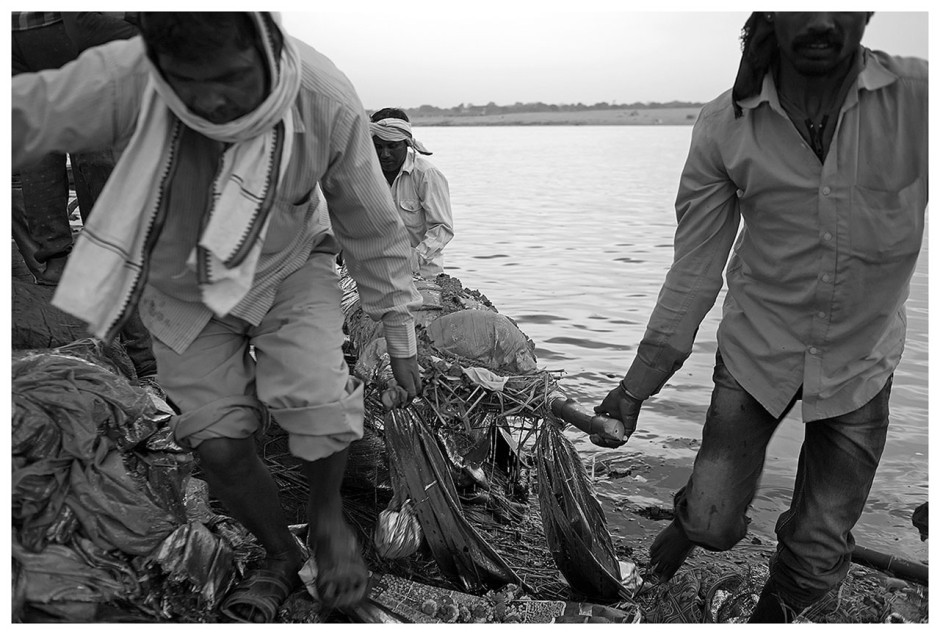
Transportation
The body is wrapped in a white sheet and covered with an orange drape, then transported by family members on a bamboo stretcher and immersed in the Ganges for the last purification. The body is then left to dry for 40 minutes before being cremated.
Intermission
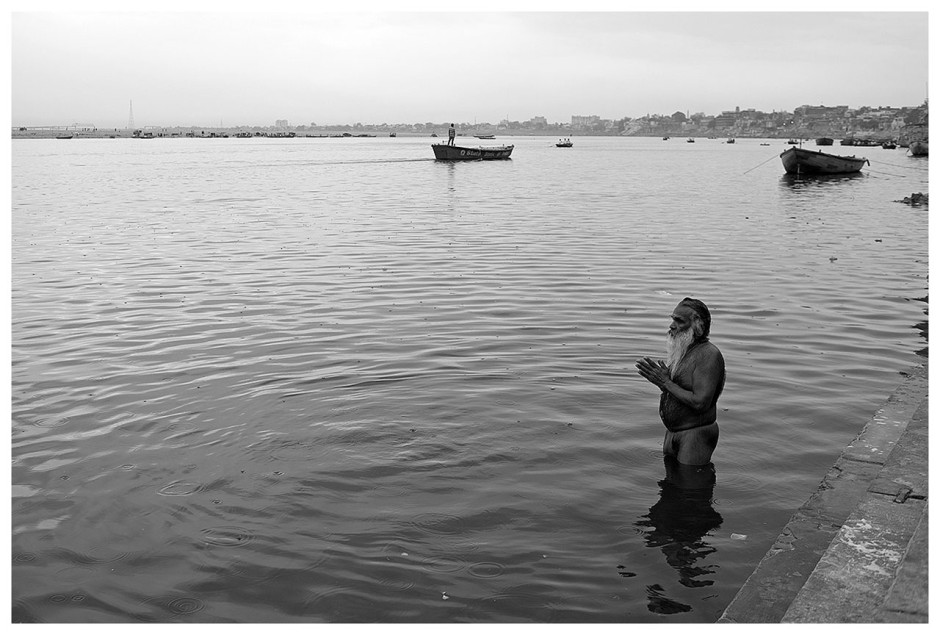
Ganges River
The Ganges is considered by Hindus a sacred river. The belief is that by swimming in the river on a daily basis it will purify the soul in order to attain salvation. The name of the river derives from ‘’Ganga’’ the God who came from heaven and cleansed the Indian people, so for this, during the cremation ceremony, the bodies are immersed in the river to cleanse them from their sins.
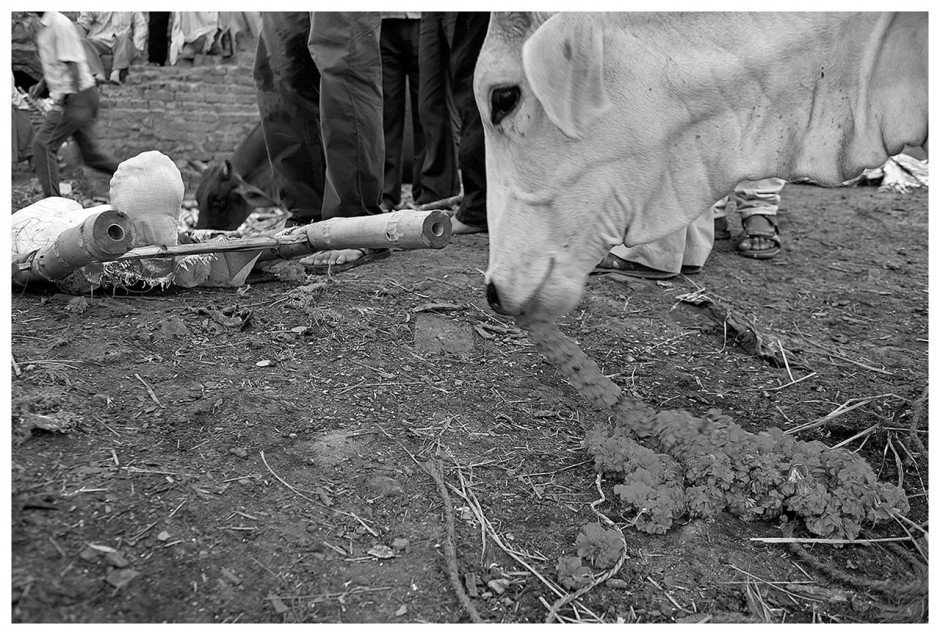
Livestock
Cows, dogs and goats roam freely among the family members and the workers and rummage around the wood-burning pyres eating what they find.
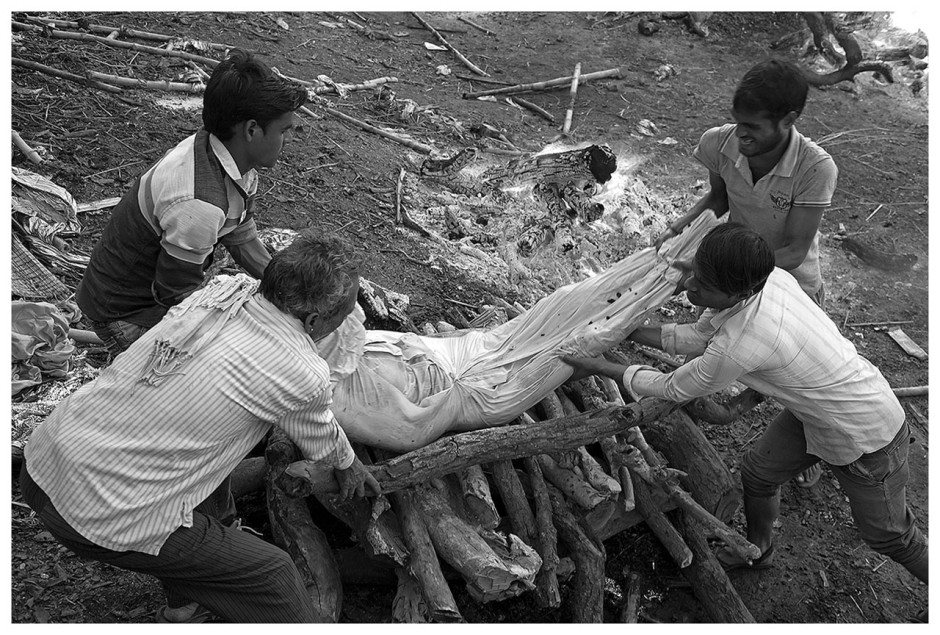
Pyre
When the body is dry it is placed on the wood pyre for cremation. Each pyre consists of roughly 160 kg of wood.
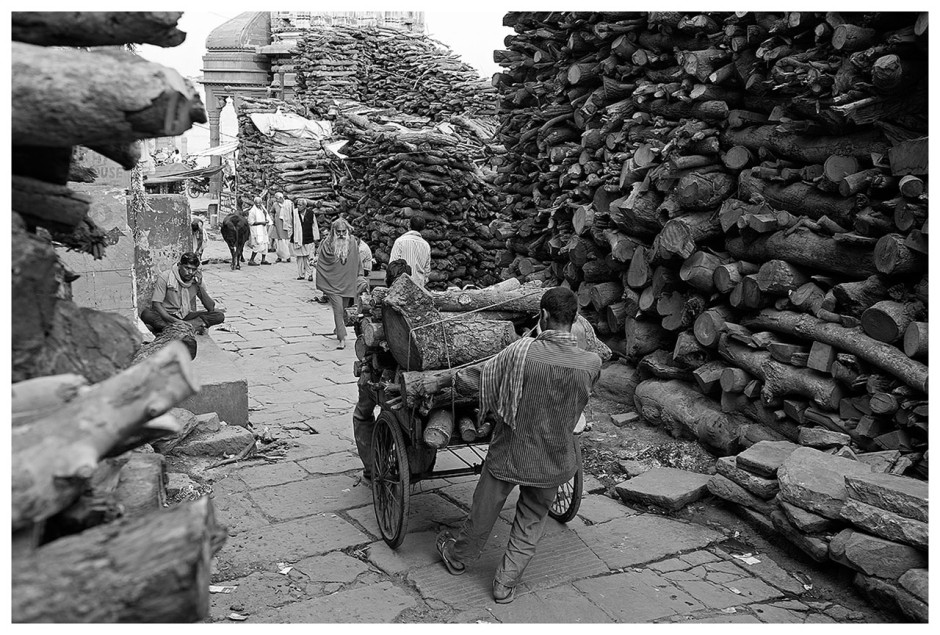
Stacked wood
The wood is stacked in the streets near the Ghat and the wood used the most is that of the Mango tree. The families who can afford it, generally those from the higher caste, buy the better quality sandalwood.
Intermission
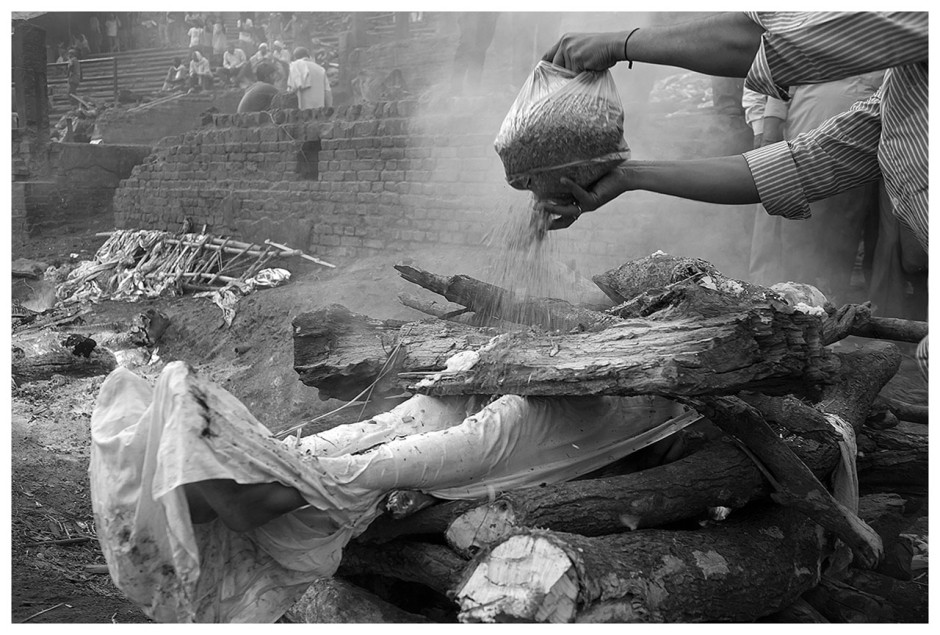
Preparation
For the men additional wood is placed over their chest, while for the women on the pelvis. Fat is scattered over the body to facilitate fire and sandal wood powder and incense to mask the smell in the air.
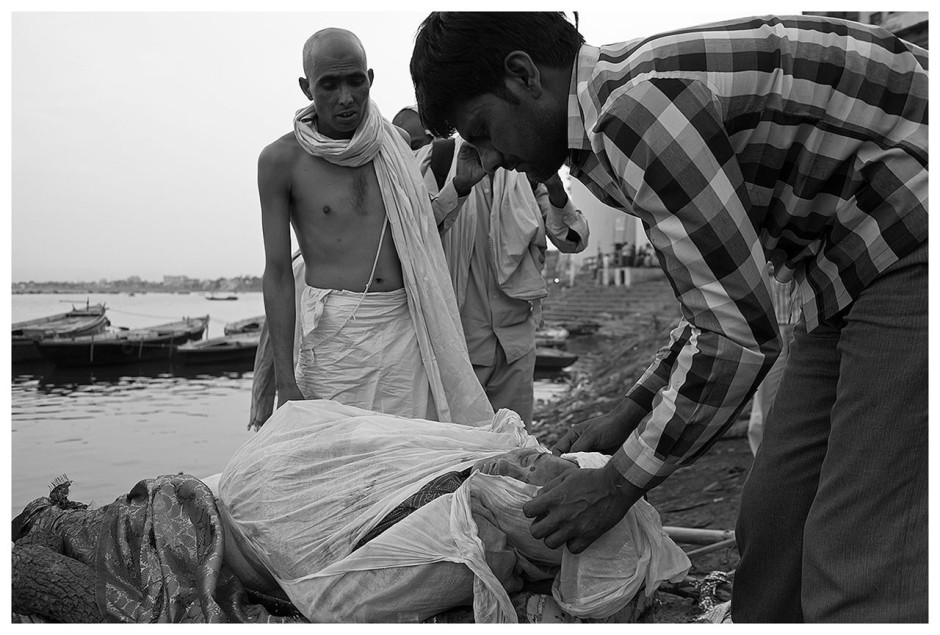
Cremation ceremony
It is normally the eldest son or the closest male member of the family who presides over the cremation ceremony. He wears white and his head is shaved as a sign of respect.
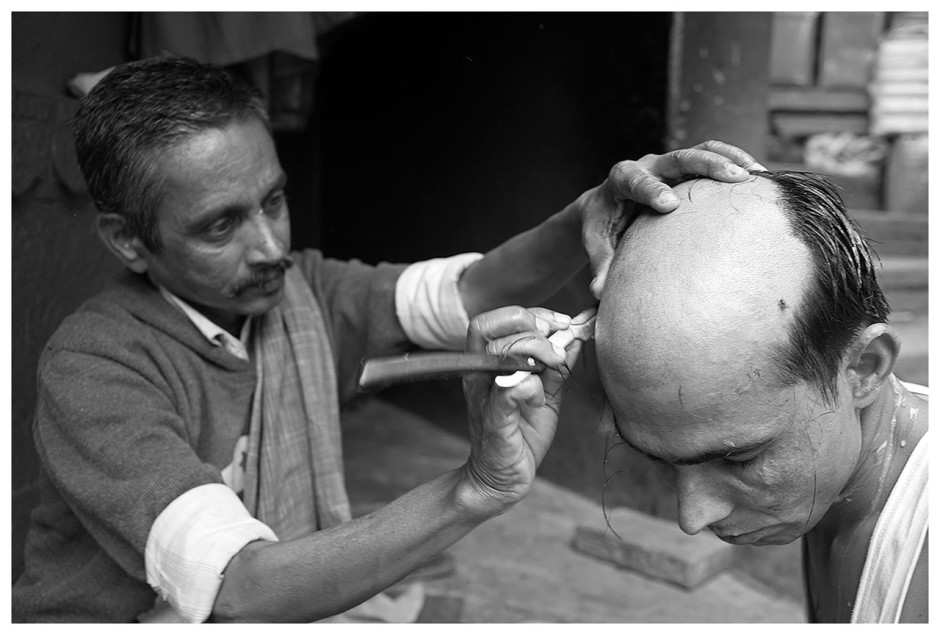
Head shaving
The head is shaved by the barbers who everyday position themselves in close proximity to the Ghat steps.
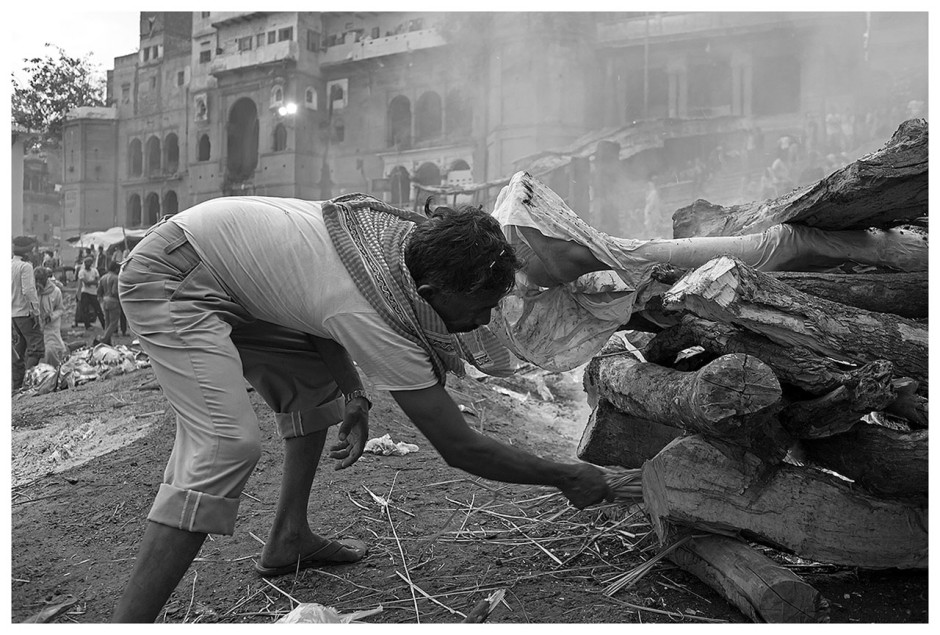
Lighting the pyre
No matches, lighters or inflammable liquids are used to ignite the wood, only the burning straw from the sacred fire which as the legend states has been burning for 3500 years day in and day out inside the temple.
Intermission
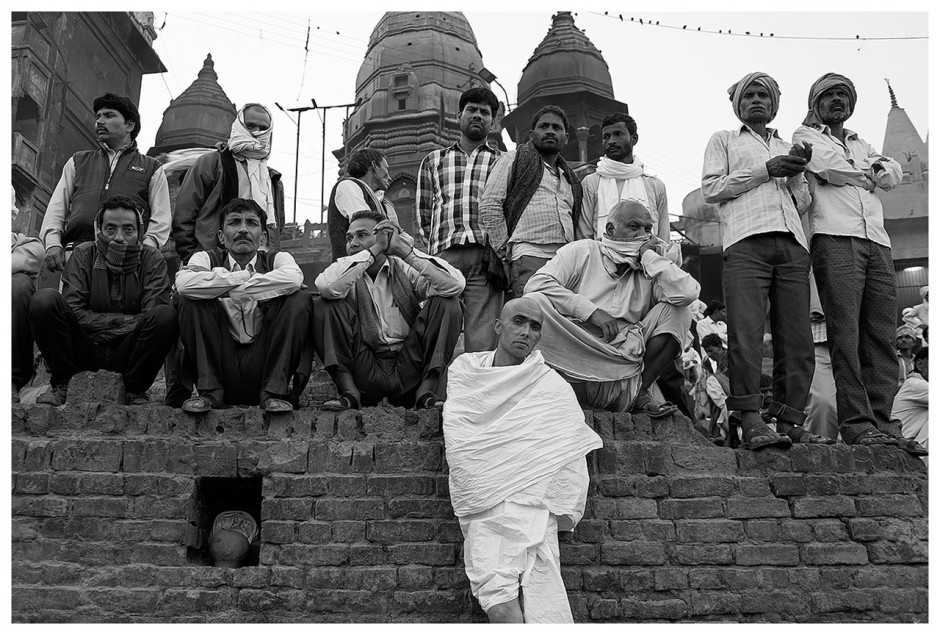
Relatives
Relatives patiently wait and assist at the cremation.
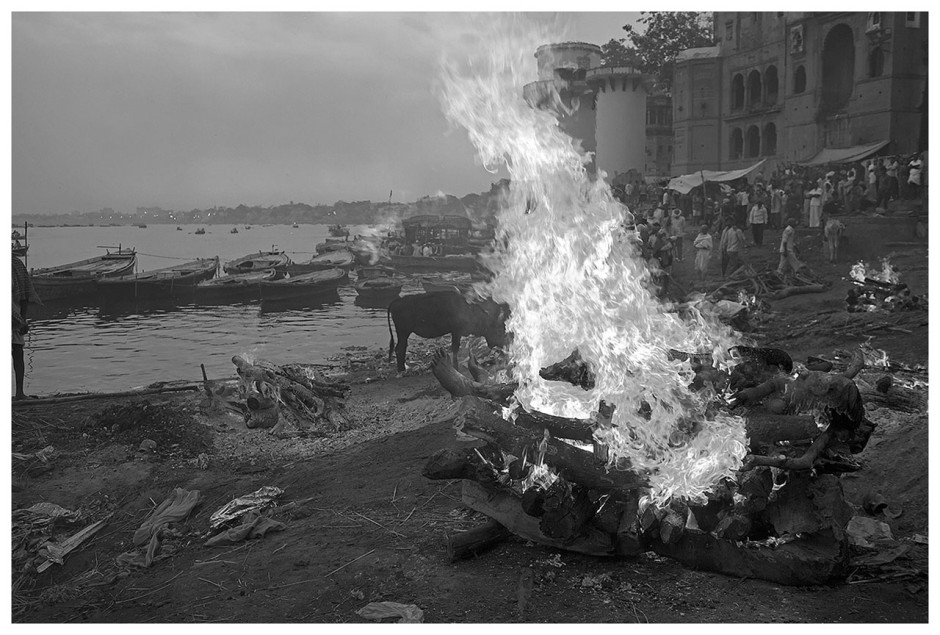
3 hours
The body is left to burn for 3 hours, after which what remains of the torso is thrown in the waters of Ganga. According to Hindu belief, cremation is seen as a way of purifying and liberating the soul from the body to heaven.
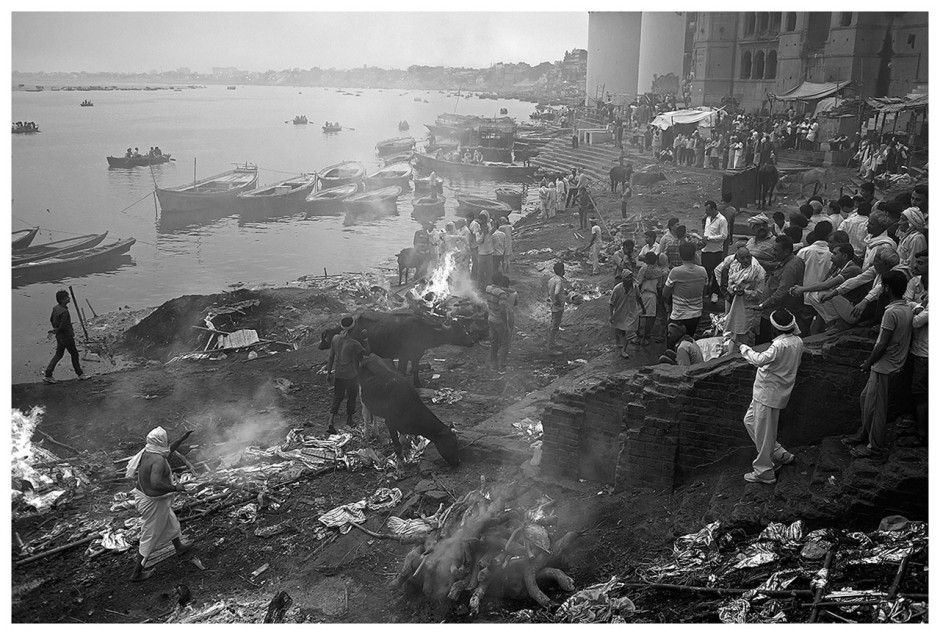
Spectators
Each day at the Manikarnika Ghat family and spectators watch between 100 and 150 bodies are cremated. Not all people are allowed to be cremated -- Holy men, children under 10, and pregnant women are already considered pure, therefore they do not need to be cremated.

Shiva
Varanasi is the city of Shiva, the creator and lord of the universe. For this reason, Hindus come to die in Varanasi. Once the soul leaves the body through cremation, the soul is purified and joins Shiva the Maker of the Universe, interrupting the cycle of reincarnation.
